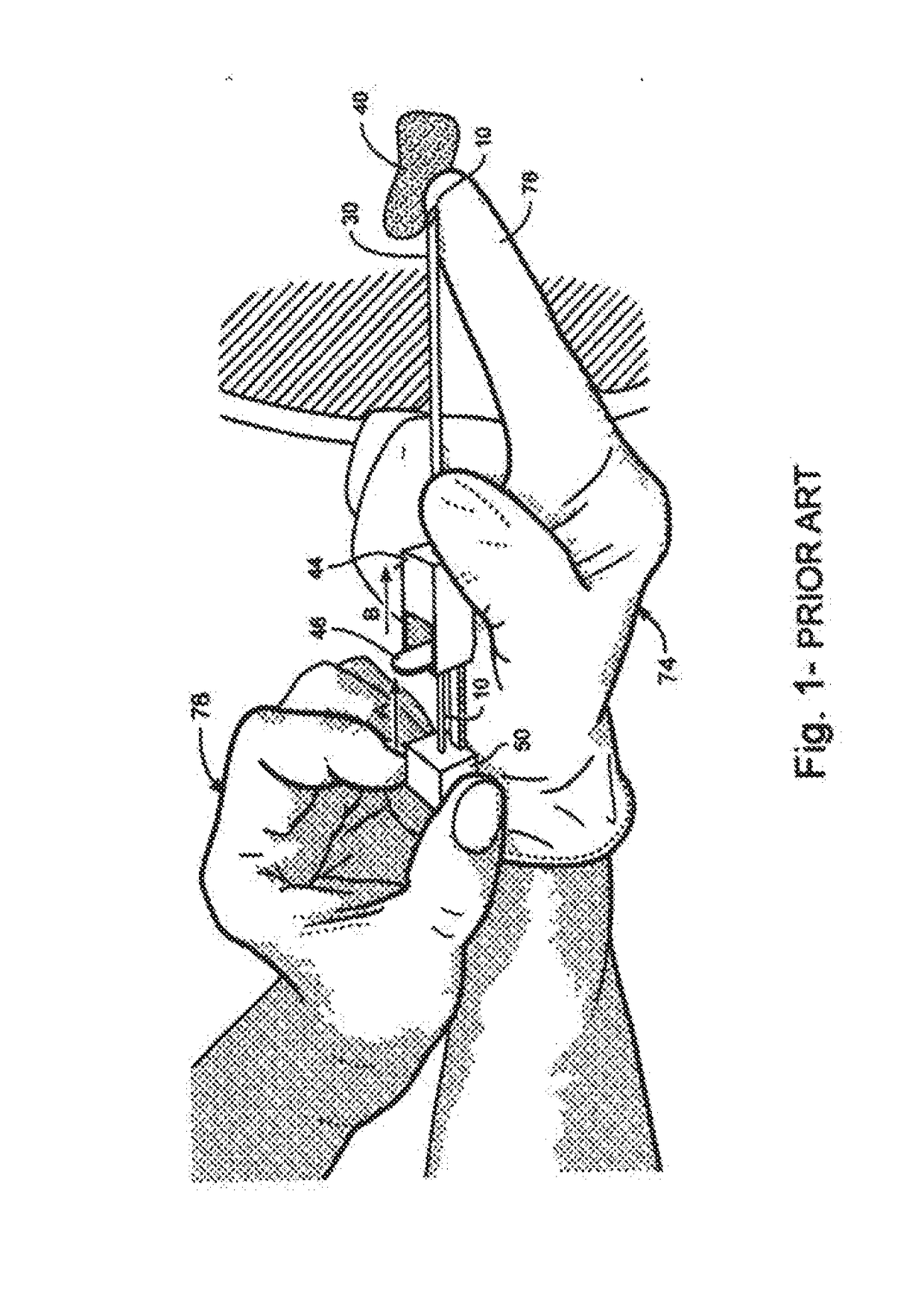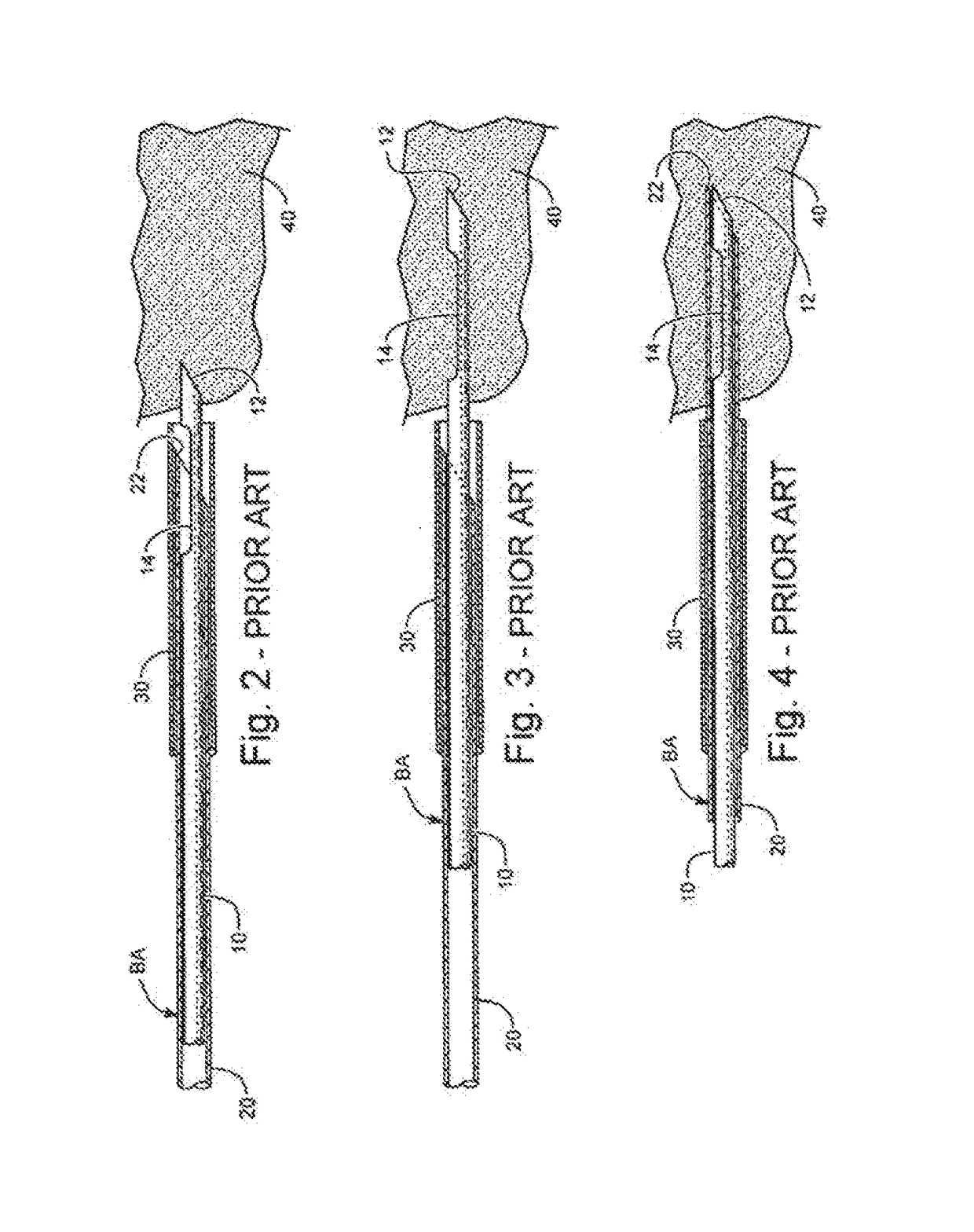Method for excising core tissue sample
a core tissue and sample technology, applied in the field of core tissue sample excretion, can solve the problems of affecting the accuracy of the biopsy, so as to achieve the effect of ensuring accuracy and ensuring accuracy
- Summary
- Abstract
- Description
- Claims
- Application Information
AI Technical Summary
Benefits of technology
Problems solved by technology
Method used
Image
Examples
Embodiment Construction
[0022]As indicated above, the subject invention is intended to provide protection to the hand of a physician or technician performing a core biopsy procedure on an internal organ, e.g., the prostate gland. Typically, the procedure involves placing the physician's finger into a body cavity for the purpose of palpating the organ of interest to locate suspicious nodules or lesions indicative of cancer or other serious diseases. When a biopsy needle assembly is activated to take a core sample of such suspicious area, the physician's fingertip must be protected from contact with the needle assembly to avoid injury. In addition to providing such protection, the apparatus of the invention serves to more precisely direct the needle assembly along a path to achieve the desired result.
[0023]Referring now to the drawings, FIGS. 5-9 show a preferred embodiment of the invention as comprising a tubular housing 2, fabricated from a suitable plastic or metal, that defines an open passageway 2A exte...
PUM
 Login to View More
Login to View More Abstract
Description
Claims
Application Information
 Login to View More
Login to View More - R&D
- Intellectual Property
- Life Sciences
- Materials
- Tech Scout
- Unparalleled Data Quality
- Higher Quality Content
- 60% Fewer Hallucinations
Browse by: Latest US Patents, China's latest patents, Technical Efficacy Thesaurus, Application Domain, Technology Topic, Popular Technical Reports.
© 2025 PatSnap. All rights reserved.Legal|Privacy policy|Modern Slavery Act Transparency Statement|Sitemap|About US| Contact US: help@patsnap.com



